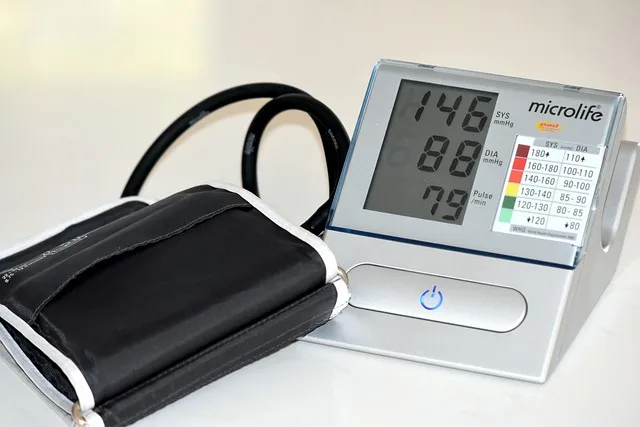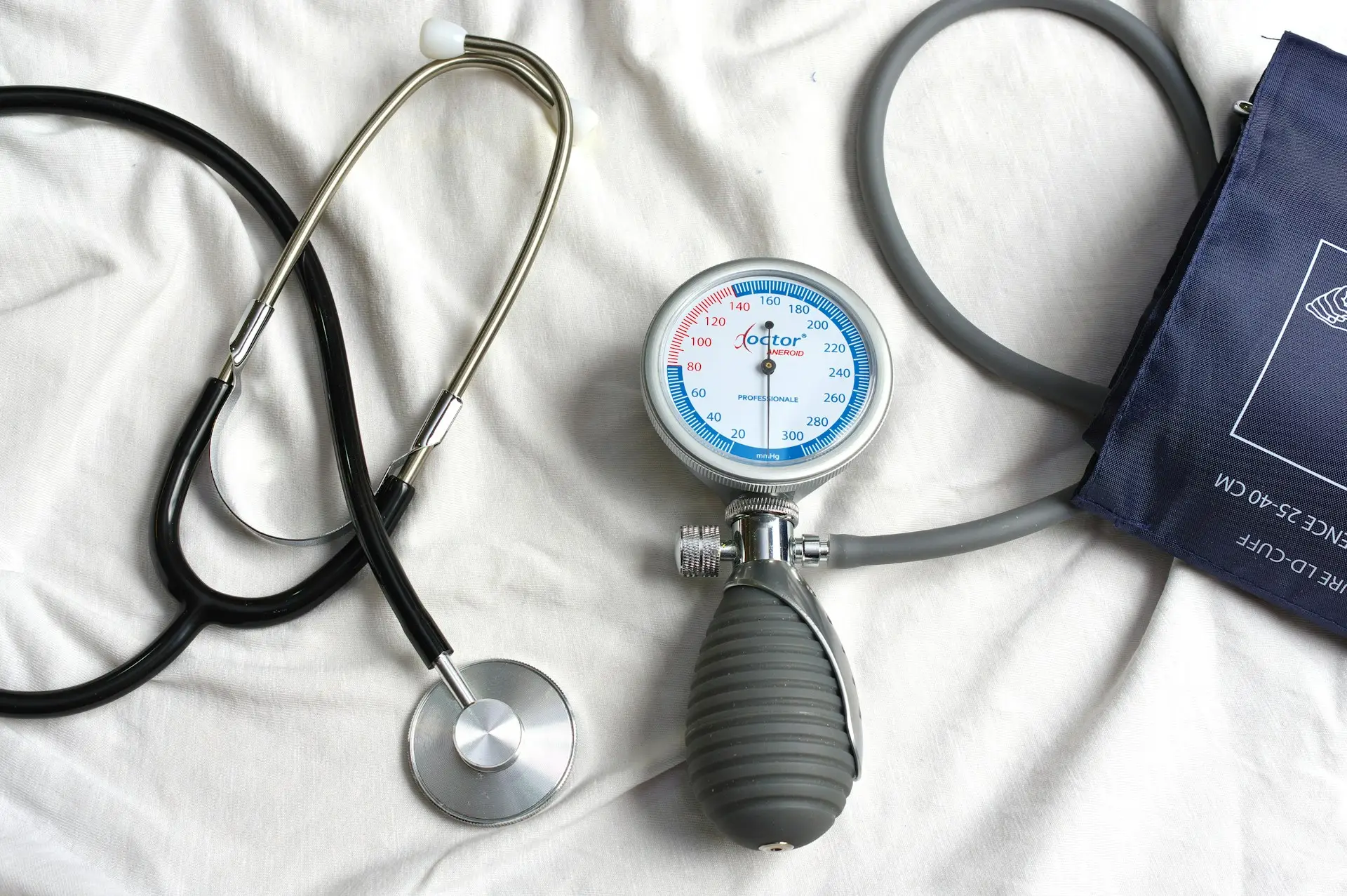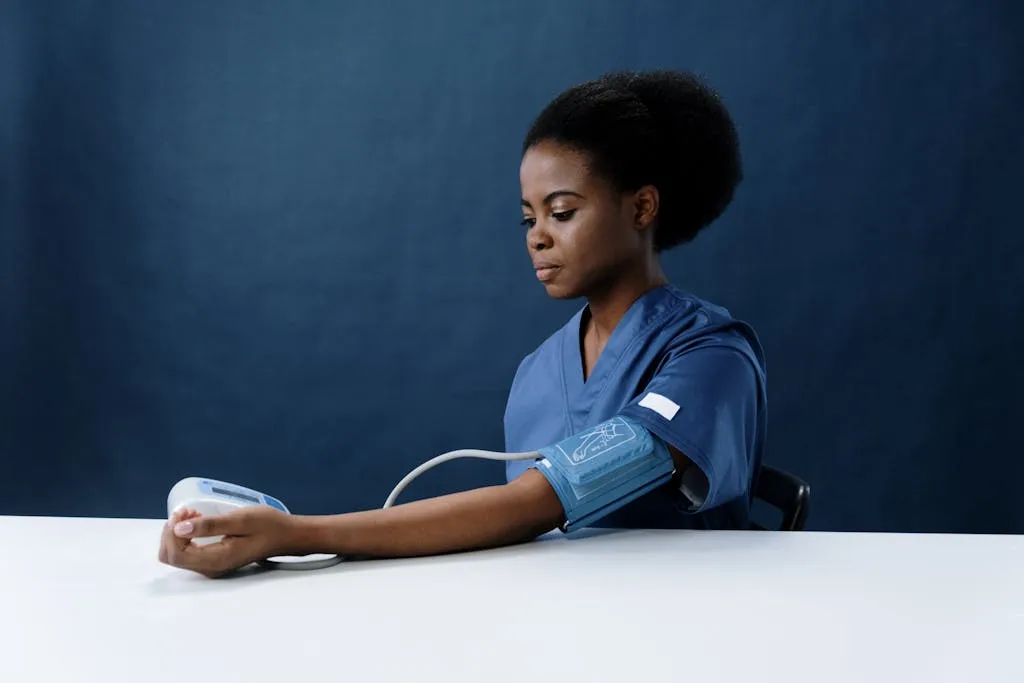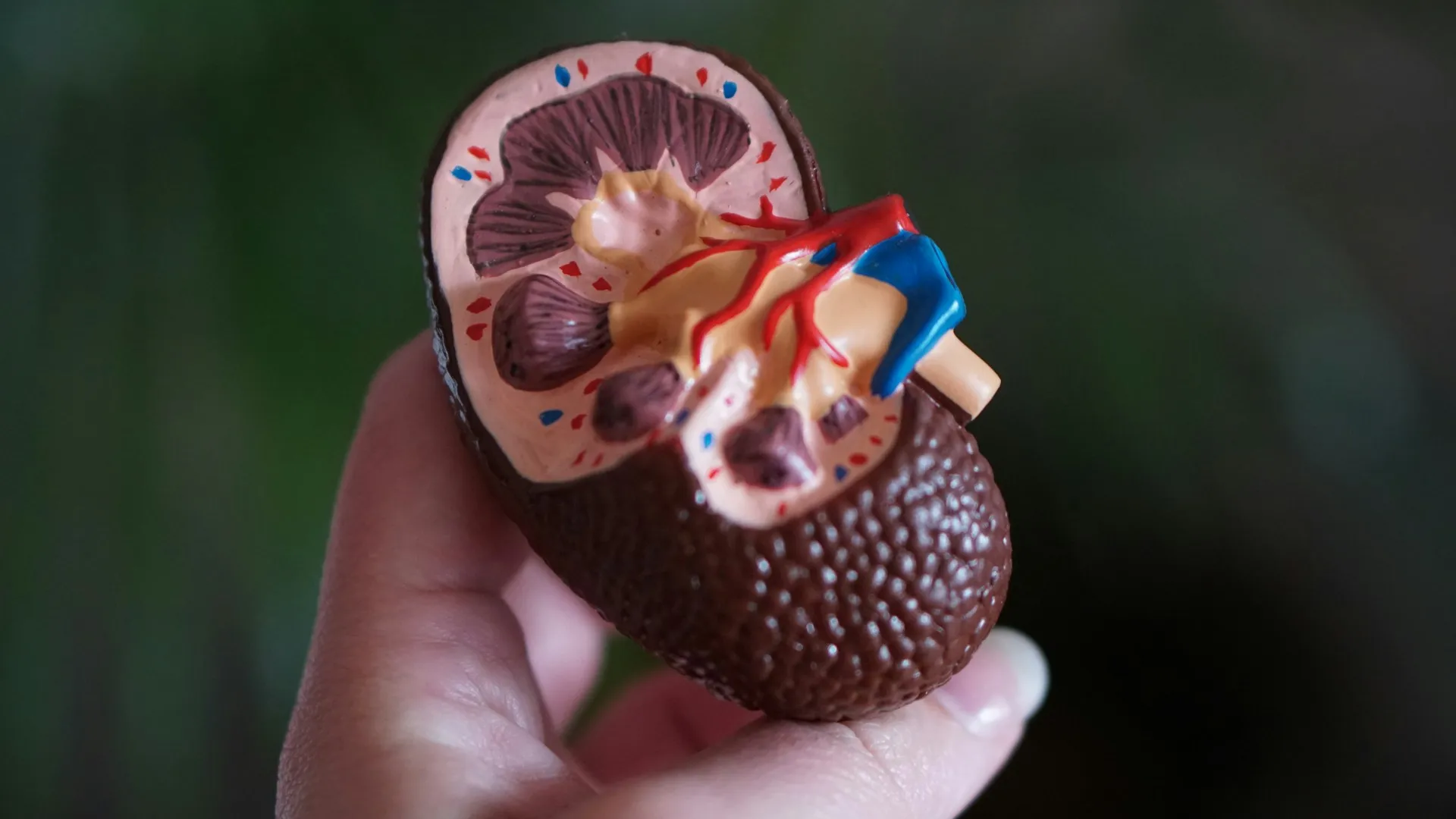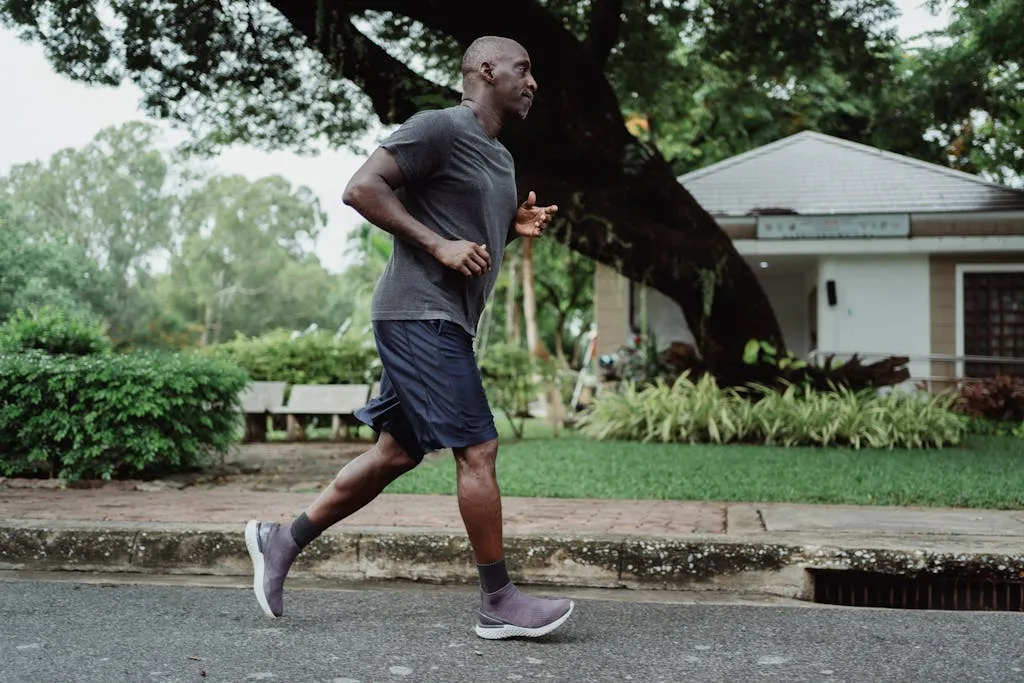Blood pressure is the strength of blood pushing against the walls of your arteries as your heart pumps it around the body.
Blood pressure that’s too low or too high can cause serious health issues, especially if it’s severe or long-standing. High blood pressure (hypertension) is more common than low blood pressure (hypotension).
High blood pressure is a “silent” condition, meaning people living with it often don’t experience symptoms until complications arise. That’s why having your blood pressure checked regularly and understanding your readings isn’t just a routine task, it’s a vital step in protecting your overall health.
How is blood pressure measured?
Blood pressure is measured with a device called sphygmomanometer. It has an inflatable cuff that a healthcare professional wraps around your upper arm. Flexible tubing connects the cuff to a small gauge in a manual sphygmomanometer or to a monitor if it’s a digital device.
During measurement, the cuff is inflated till it reaches a pressure high enough to stop the pulse. This process is painless, but you will feel the cuff tightening around your arm. After inflation, the cuff is gradually deflated as your blood pressure values are obtained.
Wrist and finger blood pressure monitors also exist, but they usually aren’t as accurate as upper arm monitors.
Home blood pressure measurement
If the doctor suspects that you have white-coat hypertension, you might be required to take your blood pressure at home. White-coat hypertension is where your blood pressure is higher than normal in the hospital, but within normal range while at home. It is due to the anxiety associated with hospital visits.
Long-term home blood pressure monitoring might also be essential if you have a diagnosis of chronic hypertension. Your doctor will tell you how often you need to take your pressure.
To make sure you get accurate readings, use a device with a cuff that fits your arm and whose accuracy has been validated by a doctor. You should also avoid vigorous exercise, caffeinated drinks, and cigarette smoking for at least 30 minutes before measurement. It’s also necessary to have a healthcare professional teach you the proper blood pressure measurement technique.
What do blood pressure numbers mean?
Blood pressure is measured in millimeters of mercury (mmHg) and its readings have 2 numbers:
- Systolic pressure: This is the first or top number. It is the pressure in your arteries as the heart contracts to pump out blood.
- Diastolic pressure: This is the second or bottom number. It is the pressure in your arteries when the heart relaxes between 2 heart beats.
Both numbers offer critical insight into your cardiovascular and overall health. But for people over 50 years, systolic pressure is a better indicator for risk of heart disease.
What blood pressure reading is normal, and what isn’t?
According to the American Heart Association (AHA), a normal blood pressure reading for adults is less than 120/80 mmHg. If it is higher than this, you either have elevated blood pressure or hypertension. The doctor will take your blood pressure more than once to confirm that it’s higher than normal.
The table below shows the 5 blood pressure ranges and what they mean.
Category | Systolic pressure (mmHg) | Diastolic pressure (mmHg) |
Normal blood pressure | Less than 120 | And less than 80 |
Elevated blood pressure | 120 to 129 | And less than 80 |
Stage 1 hypertension | 130 to 139 | Or 80 to 89 |
Stage 2 hypertension | 140 or more | Or 90 or more |
Hypertensive crisis | Over 180 | Or over 120 |
Your blood pressure reading might also be lower than normal. Low blood pressure (hypotension) is when your blood pressure is less than 90/60 mmHg. Symptoms of hypotension include dizziness, fatigue, confusion, and fainting.
Blood pressure readings for children
Blood pressure in children is naturally lower than in adults and varies based on age, sex, and height. Normal or abnormal pediatric blood pressure is determined by percentile charts rather than fixed numbers. If you need help understanding your child’s readings, seek help from a pediatrician.
What are the complications of low and high blood pressure?
Complications of severe or untreated hypotension include:
- Fainting
- Increased risk of injury from falls
- Damage to the heart, brain, and other organs
Untreated chronic hypertension can cause:
- Kidney damage
- Eye disease
- Stroke
- Heart attack
- Heart failure
- Dementia
- Peripheral artery disease
How can I maintain a healthy blood pressure?
For people with normal or elevated blood pressure, healthy lifestyle habits are usually enough to keep blood pressure in check.
If you have hypertension, your medical team will come up with a treatment plan depending on the stage of hypertension and other medical conditions you might have. When you have:
- Stage 1 hypertension, lifestyle changes alone might be enough to control your blood pressure. Some people may also need to take blood pressure medications, especially those with other chronic conditions.
- Stage 2 hypertension, you will need to take blood pressure medications and to make lifestyle changes.
- A hypertensive crisis, you should seek medical help immediately. With a hypertensive crisis, your blood pressure is 180/20 mmHg or higher, and you may have symptoms like:
- Shortness of breath
- Chest pain
- Vision problems
- Difficulty speaking
- Numbness or weakness
- Severe headache
Lifestyle changes
Lifestyle adjustments that can help to bring your blood pressure down include:
- Reducing your daily salt intake
- Eating a heart-healthy diet like the DASH diet
- Exercising regularly (at least 150 minutes of moderate-intensity activity every week)
- Maintaining a healthy weight
- Limiting alcohol consumption
- Quitting smoking
- Finding healthy ways to manage stress
Medications
Some common types of blood pressure medications that your doctor may prescribe include:
- Calcium channel blockers
- Diuretics
- Angiotensin-converting enzyme inhibitors
- Angiotensin II receptor blockers
- Beta-blockers
Dealing with low blood pressure
Low blood pressure often doesn’t require treatment unless it causes symptoms. You can manage hypotension and its associated symptoms by:
- Drinking plenty of fluids.
- Increasing your salt intake.
- Standing up slowly from a sitting or lying position.
- Wearing compression stockings to improve blow flow away from your legs.
- Eating small, frequent, low-carbohydrate foods. This prevents post-meal drops in blood pressure.
- Consulting a doctor if symptoms persist or worsen. The doctor will identify and treat the underlying cause of your hypotension, if any.
What is the difference between blood pressure and pulse rate?
Blood pressure and pulse rate are both important signs that reflect heart health and how well blood flows around the body. Blood pressure is the strength of blood pushing against artery walls as the heart pumps, while pulse rate is the number of times the heart beats per minute (bpm).
For adults, a normal blood pressure is less than 120/80 mmHg and a normal pulse rate at rest is between 60 and 100 bpm. Those who regularly engage in physical activity might have a normal resting pulse rate as low as 40 bpm.
The takeaway
Monitoring your blood pressure is essential for maintaining good health. A normal reading is below 120/80 mmHg, while higher numbers indicate different stages of hypertension. Low blood pressure is usually harmless but can cause symptoms like dizziness or fainting. Knowing your numbers helps you take action before serious problems arise.
Simple lifestyle changes, like eating healthy, exercising, and managing stress, can help control blood pressure. Some people may also need medication. If your readings are very high, very low, or you have concerning symptoms, seek medical advice. Taking control of your blood pressure today can protect your health in the long run.

